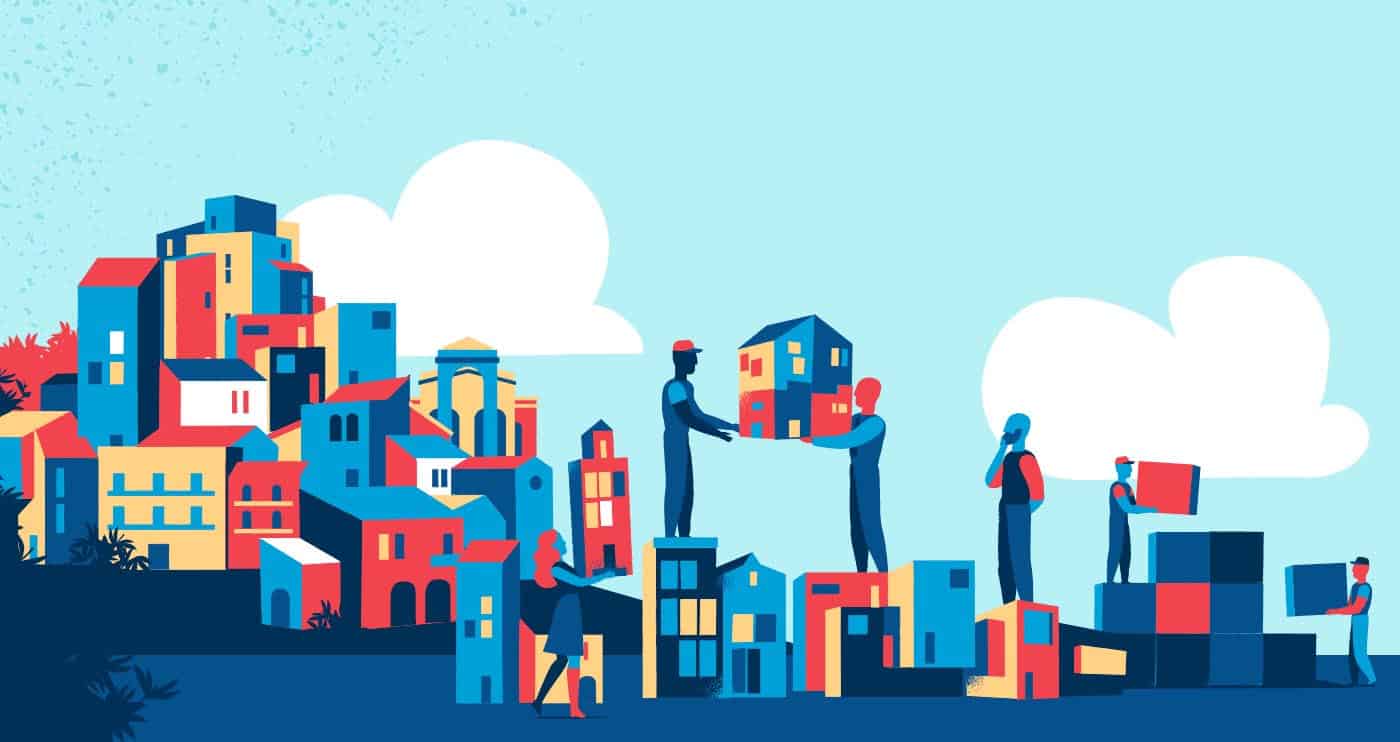
What will buildings look like tomorrow?
4 minutes of reading
As a partner in the initiative, we now want to share the third stage with you, to present the four brand new prospective scenarios that anticipate possible futures for building and real estate in 2050.

In a previous article, we presented the first two stages of the forward-looking collaborative initiative called “Let’s imagine tomorrow’s buildings together“ carried out by CSTB and ADEME, which was intended to prepare the future of buildings in France by 2050, by sharing the differing visions of players in construction and real estate.
As a partner in the initiative, we now want to share the third stage with you, to present the four brand new prospective scenarios that anticipate possible futures for building and real estate in 2050.
Climate change, demographic transition, changing uses, and technological change are some of the challenges that will profoundly transform the supply and demand of real estate in future years. To enable everyone to prepare for this, ADEME and the CSTB have spent two years carrying out forecasting work, drawing up more or less favourable, but probable, futures for buildings between now and 2050. In consultation with stakeholders in the sector (including Bouygues Construction), they have developed a toolbox based on 22 key factors, resulting in four scenarios, which were presented on 25 January at a dedicated symposium hosted by Radio Immo.
What will buildings look like in 2050? To what extent will they be able to accommodate human activities? Will the sectors adapt to the new challenges?
Four scenarios have been developed, taking account of 22 key factors. They illustrate more or less favourable futures which are sources of rebalancing or, on the contrary, of disparities: #Scenario 1: Difficult to do everything, or the difficulty for stakeholders to do everything simultaneously, in the face of the major transitions. The building stock develops in contrasting ways: there are some high-performance buildings, but there are still a lot of ill-adapted structures. #Scenario 2: The building as a service: players adapt rapidly to the challenges of ecological and demographic transition. A profound transformation in the nature of buildings will occur, with buildings considered as “services” made available to their occupants. #Scenario 3: Rebalancing, in favour of peri-urban territories, medium-sized towns and rural areas. Preserving the environment and anticipating systemic crises have become priorities. #Scenario 4: Shortages, or the impact of systemic crises (climate, economic, health) on the operating capacity of stakeholders (households, businesses, public authorities, etc.). Continuing the work of forecasting the future These four scenarios provide valuable initial insight for players in construction and real estate. To take things further, “Let’s imagine tomorrow’s buildings together” is now being enriched, in view of the very positive reaction and the involvement of the sector in the process. The next phase is to capitalise now on the work already completed, in three key areas:- Supporting players wishing to use the tools created during the first stages, to provide input for strategy thinking in their own organisations.
- Enriched data with cross-referencing to create even more robust and easily adaptable scenarios, adapted to each activity.
- Launch of an additional collective exercise, entitled “Let’s imagine building and real estate in the age of the circular economy”.
“With the Transition(s) 2050 scenarios and the ‘Let’s imagine tomorrow’s buildings together’ Toolbox, we wanted to give each player in the building and real estate sectors all the keys to help them better imagine the major changes that will occur in future years. Thanks to this work, we can understand the scale of the ecological transition, but also the concrete implications in terms of the future of the building and real estate sectors. Don’t hesitate to make use of it!”
Arnaud Leroy, Chairman of ADEME
“The real estate sector is right at the heart of all the transitions and transformations that our society is undergoing and will undergo. The collective initiative ‘Let’s imagine tomorrow’s buildings together’ allows us to envisage possible futures. It is up to us to seize this opportunity to anticipate and better prepare the future. In this perspective, the work we have been doing will continue. On the strength of our initial work and the research that we have carried out in parallel, we are in a position to strengthen it with a quantitative analysis and to deepen it on the question of resources and the circular economy.”
Etienne Crépon, Chairman of CSTB
More information :
Watch the “Let’s imagine tomorrow’s buildings today” symposium
Download the “Let’s imagine tomorrow’s buildings today” summary report
Check out the open source toolbox on www.batimentdemain.fr
More reading
Read also




What lies ahead? 7 megatrends and their influence on construction, real estate and urban development
Article
20 minutes of reading

